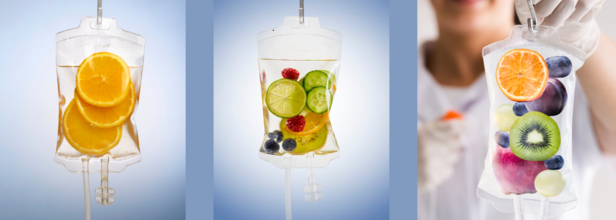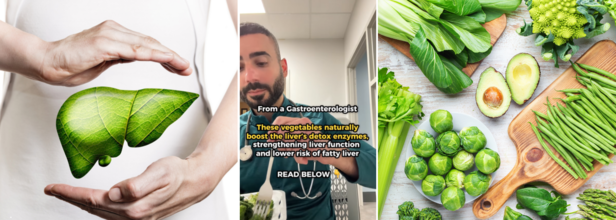- Health Conditions A-Z
- Health & Wellness
- Nutrition
- Fitness
- Health News
- Ayurveda
- Videos
- Medicine A-Z
- Parenting
- Web Stories
With Fourth Of July Around The Corner, Are You Making These Food Safety Mistakes At Your Cookout?

Credits: Canva
As the Fourth of July approaches, millions of Americans are preparing to fire up their grills, lay out the red-and-white checkered picnic blankets, and celebrate with friends and family over burgers, potato salad, and fireworks. But while the star-spangled festivities symbolize freedom, fun, and food, one oversight—food safety—could lead to a less-than-patriotic ending to the day.
Experts warn that summertime cookouts, especially on high-heat holidays like July 4th, can be a perfect breeding ground for foodborne pathogens. Without proper precautions, your backyard BBQ could quickly turn into a bacteria buffet.
Why Summer Is a Hotbed for Foodborne Illnesses?
“Summer food safety is often overlooked, and this can lead to some serious consequences,” says Qinchun Rao, Assistant Professor of Food Science at Florida State University, in a news release. The combination of warm temperatures and outdoor dining creates an ideal environment for bacteria such as Salmonella, Listeria, and E. coli to grow and spread—especially on perishable items like meats, dairy, and mayonnaise-based salads.
According to the U.S. Food and Drug Administration, approximately 48 million Americans suffer from foodborne illnesses every year. These illnesses result in an estimated 128,000 hospitalizations and 3,000 deaths annually. Rao points out that most of these cases are preventable with better food handling and storage practices.
Hot, sunny days accelerate bacterial growth, especially when perishable foods are left out too long. “Eating food that’s been left out too long can lead to foodborne illnesses caused by bacteria like salmonella, E. coli, and listeria,” Rao explains. The symptoms—nausea, vomiting, diarrhea, and fever—can quickly turn a joyful holiday into a health crisis.
The “Danger Zone” You Need to Know About
The USDA defines the temperature range between 40°F and 140°F as the “danger zone,” where bacteria can double in number in as little as 20 minutes. This is crucial to understand during outdoor gatherings where food is often left sitting out on tables under the summer sun.
If you’re hosting a cookout and the weather is above 90°F, the safe window for keeping perishable food out of the fridge or off a heat source is just one hour. Any longer, and you’re serving up more than just burgers and corn on the cob—you’re inviting foodborne pathogens to the party.
What are the High-Risk Foods?
Certain foods are especially susceptible to bacterial contamination. “Foods that are high in protein and moisture, such as dairy products, eggs, seafood, cooked meats and mayonnaise-based salads are especially risky,” Rao says. Potato salads, pasta salads, deviled eggs, and other cold dishes made with mayonnaise are prime breeding grounds for bacteria like salmonella and listeria if not kept cold.
To minimize risk, cold foods should be stored at or below 40°F, either in an ice-filled cooler or served on a bed of ice. Hot foods, such as burgers and hot dogs, should be kept warm in insulated containers or on chafing dishes.
A common mistake is assuming that food is safe if it looks and smells fine. “A common myth is that ‘if food smells and looks fine, it’s safe to eat.’ In reality, many harmful bacteria do not alter the taste, smell, or appearance of food,” Rao cautions. Another misconception is that reheating food will kill all bacteria. While reheating can destroy some bacteria, it may not eliminate toxins already produced by bacteria like Staphylococcus aureus.
Safe Food Handling Tips for a Stress-Free Celebration
1. Keep It Cold
Cold dishes should be stored at or below 40°F, ideally in a cooler packed with ice or served over an ice bed. Keep coolers in the shade and open them only when necessary to maintain temperature.
2. Keep It Hot
Cooked items like burgers and hot dogs should be kept warm in chafing dishes or insulated containers. Use foil to cover dishes and minimize exposure to insects and the sun.
3. Cook Thoroughly
Use a food thermometer to ensure meats are cooked to safe internal temperatures. Don’t rely on color alone to judge doneness:
Poultry: 165°F
Ground meats: 160°F
Steaks and pork: 145°F (with a 3-minute rest)
4. Don’t Trust Your Senses
“It’s a myth that food which looks or smells fine is safe to eat,” Rao warns. Many harmful bacteria do not alter food's appearance or scent. Likewise, reheating won’t always kill all bacteria—particularly if toxins have already been produced.
Another dangerous assumption is that food can be “saved” by placing it back in the refrigerator after being left out for too long. “Refrigerating it after this period does not make it safe, as bacteria may have already multiplied to dangerous levels,” says Rao. “It’s safer to throw it out than risk foodborne illness.”
Common Foodborne Pathogens
Understanding the main bacteria that cause food poisoning can help you recognize the signs of contamination and know when to seek medical attention.
- Salmonella (6–48 hours after ingestion): Causes diarrhea, fever, and cramps. Common in eggs, poultry, and raw fruits/vegetables.
- E. coli (1–8 days): Severe, often bloody diarrhea, with the risk of kidney failure in young children. Found in undercooked beef and unpasteurized products.
- Listeria (9–48 hours to several weeks): Affects pregnant women and elderly; can cause miscarriage, meningitis, or blood infection. Found in deli meats and soft cheeses.
- Norovirus (12–48 hours): Causes vomiting and diarrhea; spreads via contaminated produce or shellfish.
- Staphylococcus aureus (1–6 hours): Sudden nausea, cramps, and vomiting. Found in egg or potato salads left out too long.
As American families gather to celebrate freedom, health experts hope they also exercise caution and common sense. “Just a few extra steps in food preparation and storage can save a holiday from turning into a trip to the emergency room,” says Rao.
If you're hosting this year’s festivities, prepare in small batches, keep perishables cold, and discard anything that’s been sitting out for too long. Serving in smaller portions and replenishing frequently from a cooler or insulated container is one of the simplest ways to keep food safe without compromising on the spread.
The Fourth of July is about celebrating independence, togetherness, and tradition—but none of that requires a side dish of stomach cramps or food poisoning. Food safety might not be flashy, but it’s the unsung hero of every successful cookout.
The Truth About IV Drips: Are They Better Than Food Or Supplements?

Credits: Canva
If you have seen people fulfilling their supplement needs through injections and you are wondering how does it all work out, then you landed at the right page.
This process is called IV therapy or Intravenous Vitamin therapy. It is also known as intravenous micronutrient therapy and hydration therapy. It is a way to give high concentrations of vitamins and minerals directly into the bloodstream, allowing rapid absorption of higher doses of the vitamins and minerals than if the person got them through food or supplements.
How Does It Work?
These liquids are delivered through a small tube which is inserted into a vein.
The infusion usually takes from 20 to 60 minutes, and it depends on the volume of the cocktail and the size of person's veins.
IV vitamin therapy is usually a very popular therapy among celebrities.
The Myers' Cocktail
A 2022 study, published in the Alternative Medicine Review: A Journal of Clinical Therapeutic notes about the work of late John Myer, MD and the author who has used an intravenous vitamin and mineral formula for the treatment of wide range of clinical conditions.
The Myers' formula was created in the 1970s and this formula is known as the Myers' Cocktail, which contains:
- Magnesium
- Calcium
- B Vitamins
- Vitamin C
The Myers' Cocktail has found to be effective against acute asthma attacks, migraines, fatigue,fibromyalgia, acute muscle spasm, upper respiratory tract infections, chronic sinusitis, seasonal allergic rhinitis, cardiovascular disease, and other disorders.
However, not all studies second this claim. A more recent study done in 2023, published in journal Drug and Therapeutics Bulletin notes that while there are claims that the Myers' Cocktail can reduce stress, increase energy, or boost immunity, there is lack of high quality evidence that suggests that high dose vitamin infusions are necessary or offer any health benefit.
In fact, the study suggests that there may be harms from taking high quantities of some vitamins and minerals. This means if your body already has enough of those vitamins and you consume it through IV therapy, it may actually put your health at risk.
What Are The Risks?
The risks include blood clots, infections, and nutrient overdose. To understand the risks better and to find the answer to the question of whether IV therapy is actually needed and is better than consuming nutrients through food or medicines, the Health and Me team spoke to doctors specialising in Internal Medicines. Here's what they said.
Dr Shrey Kumar Srivastav, Senior Consultant, Internal Medicine at Sharda Hospital says that while there is no standard frequency for IV therapy in healthy individuals, "frequent or routine use can cause vitamin toxicity or electrolyte imbalances."
The doctor also debunks the claim that IV supplements are better than the vitamins one consumes through food. "Supplements taken orally or through food are typically safer, more sustainable, and sufficient for most people," he explains.
He further adds that IV supplements are not superior to food or oral supplements for general wellness or weight loss. "The growing trend of using IV injections for cosmetic or slimming purposes is risky, unregulated, and can be fatal."
High Cholesterol Food Swap For Your Heart Health Backed By Science

(Credit-Canva)
Heart disease remains a leading cause of death in the UK. A major factor contributing to this is high cholesterol, specifically high levels of LDL, or "bad cholesterol,", is known as the ‘silent killer’ because it can increase rapidly without any noticeable symptoms. While the occasional unhealthy meal might be tempting, carefully watching your diet and lifestyle is very important.
Lowering LDL Naturally
The good news is that simple changes to your diet can significantly improve your health by reducing those dangerous LDL numbers. A study published in The Journal of Nutrition found that eating more soy-based foods can lower LDL levels by 3% to 4% in adults. This supports the idea of including more plant-based proteins in your diet. High LDL cholesterol is a common issue in the UK, affecting about 60% of the population, with around 8 million people prescribed statins to manage it.
Why Soybean for Your Heart Health?
Experts explain that already known that soybeans can help lower unhealthy fats like triglycerides, total cholesterol, and LDL cholesterol, which can lead to a healthier heart. This new study just adds more proof to that idea.
This advice also matches what HeartUK, a charity focused on heart health, recommends. They encourage people to eat more soy to fight cholesterol. The charity stated that soybeans and foods made from them are perfect for a heart-healthy diet because they have lots of protein, vitamins, and minerals, and they are low in unhealthy saturated fat.
They suggest that soy products are a good choice to replace foods that are high in saturated fat, such as meat, full-fat cream, dairy products, and snacks like potato chips. They suggest trying to eat about three servings of soy products every day. This could be something like 250ml of soy milk in your coffee, a side dish of edamame beans, or using soy mince or tofu in your dinner.
Some Considerations Before Making the Change
There have been some questions regarding how soybeans actually affect your heart positively or not. A review by the European Food Safety Authority didn't consistently find that soybeans positively affect our heart, so they couldn't definitively say that soy causes cholesterol to drop. However, she emphasized that soybeans are still a very healthy food. They contain protein, fiber, good fats, and many vitamins and minerals. So, as part of a healthy, balanced diet, soybeans can still help lower cholesterol levels.
Other Reasons Why You Should Opt For Soy-Based Foods
According to the Association of UK Dieticians, the UK government healthy eating guide Eatwell Guide (2016), strongly encourages us to eat more plant-based foods. This shift is good for both our health as a nation and for creating a more sustainable planet. In fact, over 75% of the Eatwell Guide is made up of plant-based foods. A major change is in the protein section, which now suggests choosing plant-based proteins over animal proteins.
While research on soy foods is still ongoing, it's clear that soy is a nutritious and valuable food that fits well with healthy eating guidelines and might offer many health benefits.
Isoflavones
Soy contains special plant compounds called isoflavones, which are similar to the hormone estrogen but much weaker. Scientists are very interested in how these might offer various health benefits when consumed regularly.
Cholesterol Benefits
Food labeling authorities in the UK, USA, and Japan allow claims that 25g of soy protein daily can lower cholesterol. However, a 2010 assessment by the European Food Safety Authority disagreed, rejecting direct links between soy protein and cholesterol reduction.
Menopause Relief
Hot flashes are a common symptom during menopause due to lower estrogen. Research from 2012 found that consuming soy isoflavones led to at least a 20% reduction in the frequency and severity of these flashes.
Doctor Debunks Liver Detox Myths, Recommends These 14 Veggies Instead

Credits: Canva
Detox this, detox that, we have all heard a lot about it. Not so new, but still trending everywhere is the liver detox. But, does it really work?
As per John Hopkins Medicine, there is no scientific proof of liver detox drinks, which have flooded the market. Tinsay Woreta, MD, and a John Hopkins hepatologist debunks the myth that liver cleanses are important for daily health maintenance and are especially helpful after you have overindulged.
While some common ingredients in liver cleanses have been shown to have positive results — milk thistle has been shown to decrease liver inflammation, and turmeric extract has been shown to protect against liver injury — there have not been adequate clinical trial data in humans to recommend the routine use of these natural compounds for prevention, noted the John Hopkins Medicine website.
To second this, a Florida-based gastroenterologist, Dr Joseph Salhab also shared a post on his Instagram that stressed on the fact that 'you don't need a liver detox or cleanse'. However, his post claimed that you can boost your liber function naturally by eating vegetables.
14 Vegetables For Your Liver
Dr Salhab shared a list of 14 vegetables that would lower the risk of fatty liver disease and boost liver function.
"From a gastroenterologist: These vegetables naturally boost the liver's detox enzymes, strengthening liver function and lowering the risk of fatty liver," he wrote on his Instagram post.
- Broccoli
- Broccoli sprouts (highest sulforaphane content of all)
- Brussels sprouts
- Kale
- Cabbage (green, savoy, Napa, etc.)
- Bok choy
- Collard greens
- Mustard greens
- Turnip greens
- Swiss chard (contains other detox compounds, though lower in sulforaphane)
- Arugula
- Watercress
- Rapini (broccoli rabe)
- Cauliflower (not green, but still cruciferous and detox-active)
How Do These Vegetables Work?
“Your liver already detoxifies your body, and good nutrition helps it work at its best. It’s because they’re high in compounds like sulforaphane, which help induce Phase II enzymes (example: glutathione S-transferases, UDP-glucuronosyltransferases),” explained the doctor. As per him, these vegetables naturally boost Phase II detox enzymes that are already present in your liver.
As per the National Cancer Institute, US, Phase II detoxification is the process in which the liver uses one of two major enzyme pathways to change a toxic substance, such as an anticancer drug, into a less toxic substance that is easier for the body to excrete. In phase II detoxification, liver cells add a substance (such as cysteine, glycine, or a sulfur molecule) to a toxic chemical or drug, to make it less harmful.
© 2024 Bennett, Coleman & Company Limited

